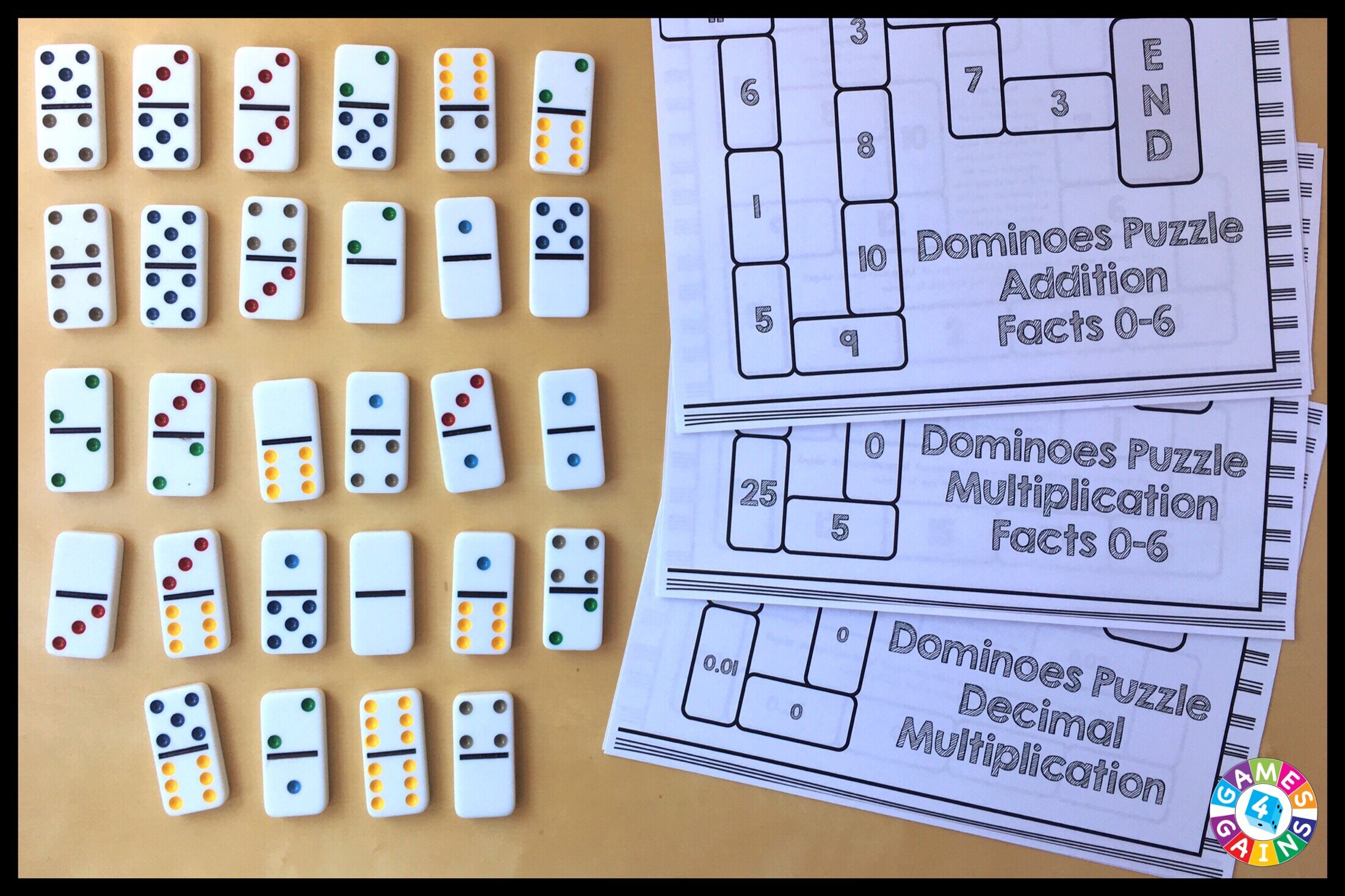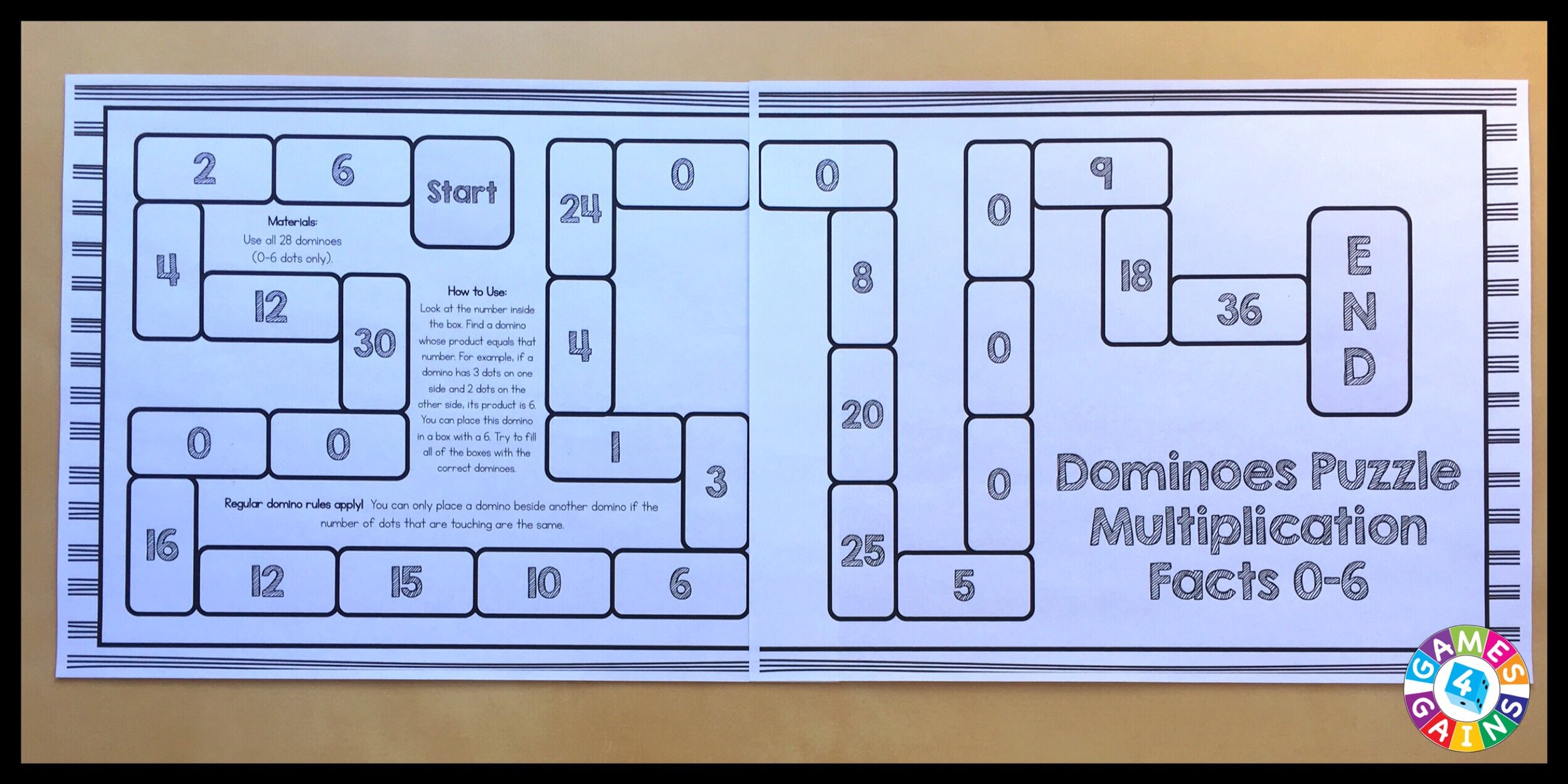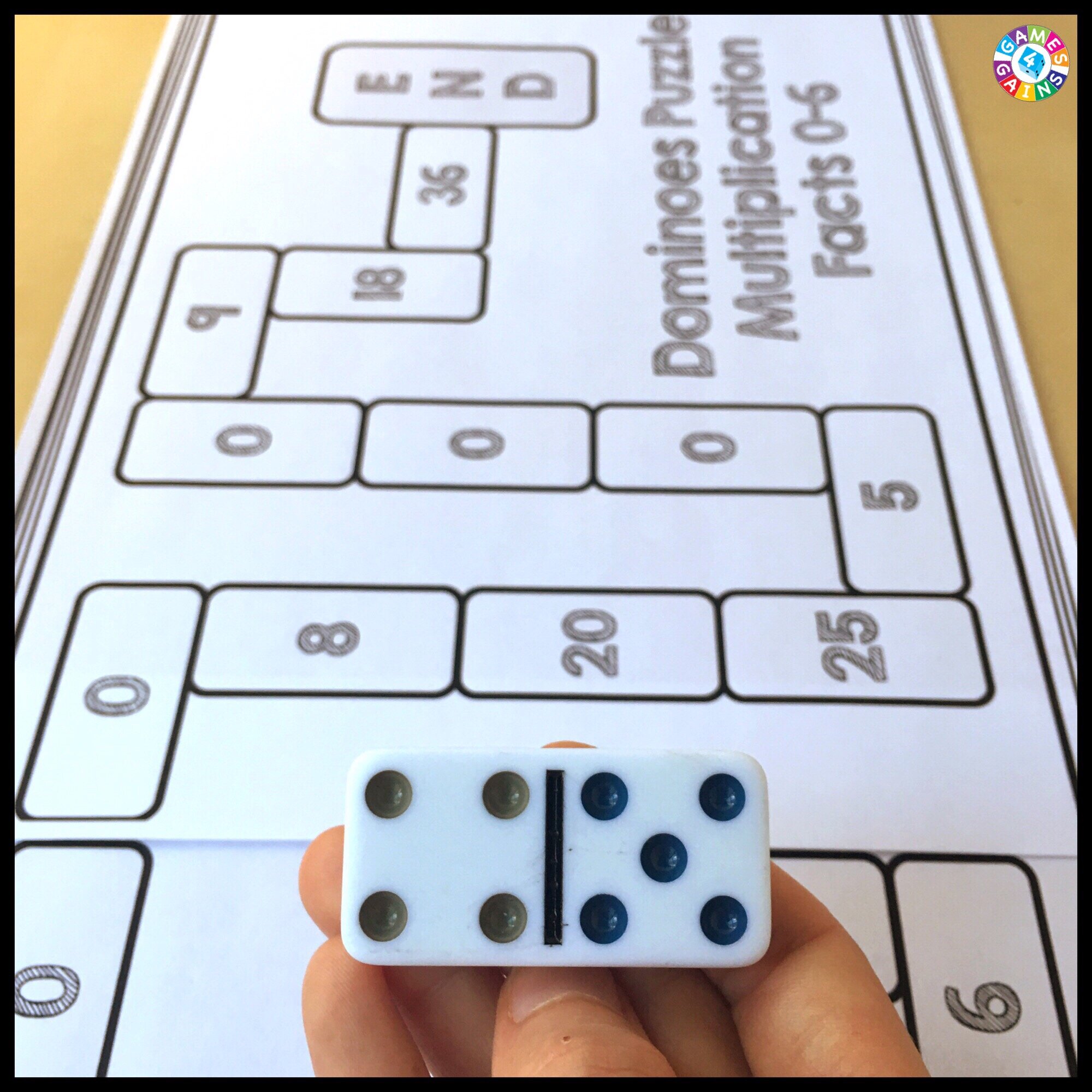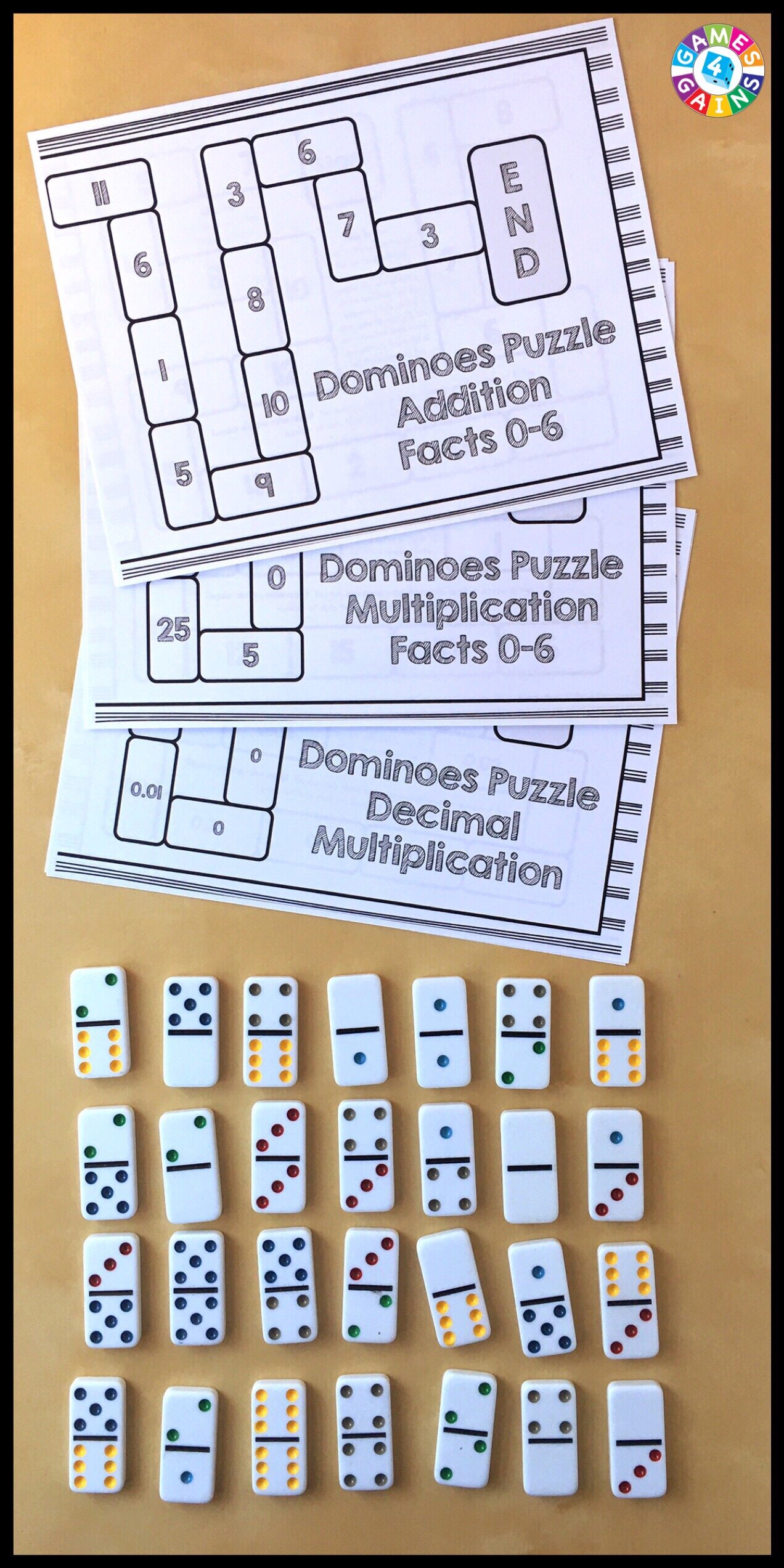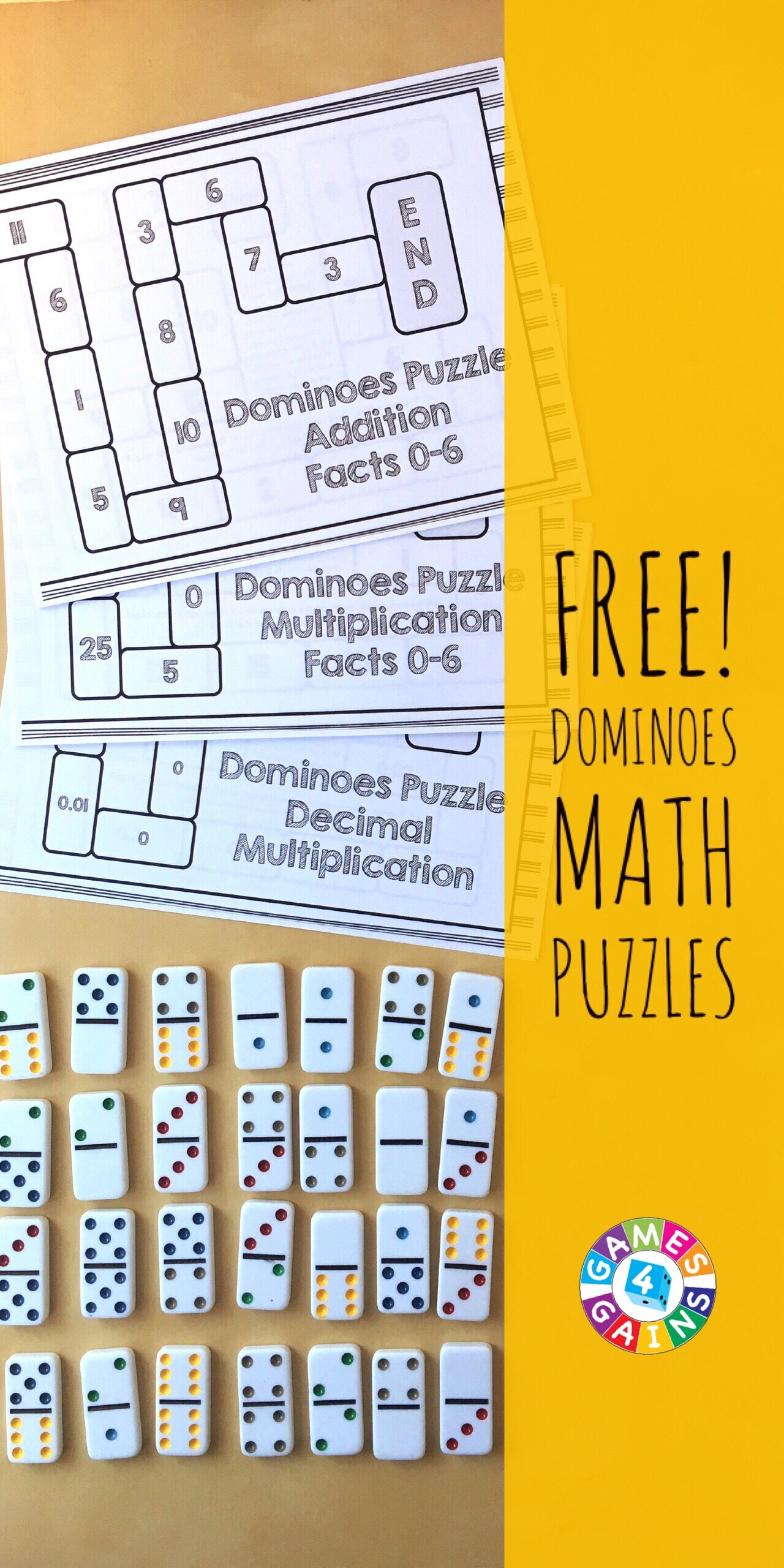Dominoes Math Puzzles
I love using things that make math activities more hands-on, whether it's dice, magnets, or in this case dominoes. I love watching kids manipulate numbers by actually moving physical pieces around, as I believe it engages different parts of the brain.
This week, I've created a puzzle for practicing either addition facts, multiplication facts, or basic decimal multiplication using dominoes. I'll use multiplication facts for the purpose of explanation, but the other versions work essentially the same way and I've provided "puzzle boards" for all three skills.
Materials needed:
Puzzle boards (see below for a free download)
Dominoes with dots 0-6 ONLY (this should be exactly 28 dominoes)
I bought this set of 90 dominoes (0-12 dots) from Amazon, which I LOVE! For this puzzle, I simply took out the 28 that I need. I will definitely be using the full set for using bigger numbers in future games! Please note that this is an affiliate link.
The Dollar Tree sells a set of dominoes (0-6 only) for $1, which is super great, but the dominoes are quite tiny.
Preparing the puzzle:
1. Click here to download these FREE Dominoes Math Puzzles.
2. Print the version you would like to use (addition facts, multiplication facts, or decimal multiplication. Each puzzle board is 2 pages.
3. Glue or tape the two pages of the puzzle board together, as shown below. If possible, I recommend that you laminate the puzzle board so that you can use it again in the future.
Solving the puzzle:
Goal: To get all 28 dominoes to "fit" correctly onto each space of the puzzle board by following the given rules.
1. Put all 28 dominoes face-up in front of you, so that you can see all of the numbers. It is important to note that for these puzzles, a blank side of the domino equals 0.
2. On the puzzle board, each domino space has a number. You may place a domino on top of that number if you get that number by multiplying the two sides of the domino together. For example, if your domino has 4 dots on one side and 5 dots on the other, you may place that domino on top of any domino space that reads "20" because 4 x 5 = 20.
Notes for Addition Facts and Decimal Multiplication Versions:
For the addition board, you add the two sides of the domino together. For example, if your domino has 4 dots on one side and 5 dots on the other, you may place that domino on top of any domino space that reads "9" because 4 + 5 = 9.
For the decimal multiplication board, each side of the domino should be thought of as tenths. Therefore, if your domino has 4 dots on one side and 5 dots on the other, you may place that domino on top of any domino space that reads "0.2" because 0.4 x 0.5 = 0.2.
3. When placing the dominoes onto the spaces on the puzzle board, regular domino rules still apply in the sense that the same number of dots can only touch the same number of dots. A side of 4 dots on one domino can only touch a side of 4 dots on the next domino, as shown below.
4. Continue placing dominoes on the puzzle board until you've put a domino on top of each space from Start to End by following the rules above. I've included the solution for each puzzle in the puzzle board download.
IMPORTANT: As you are solving the puzzle, you do not need to place the dominoes in order from Start to Finish. In fact, it may help students to place dominoes in spaces where they must go first and then work from there. For example, in the multiplication version, there's only one space with 36. That space has to be covered by the 6 x 6 domino.
Don't forget that this puzzle comes with three different versions so that you can choose the one that best fits what you're teaching!
Did your students enjoy playing this game? We'd LOVE it if you'd share one of our images on social!


